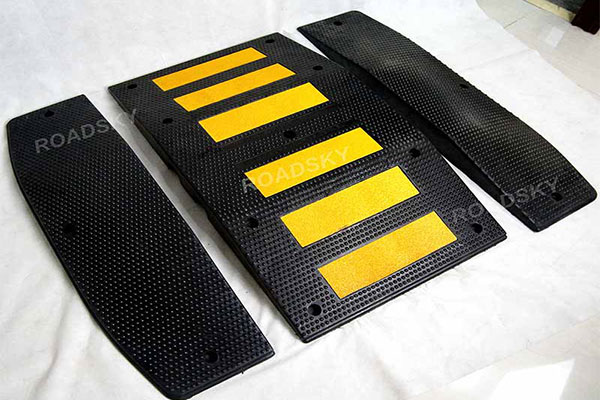Speed Bumps vs Speed Humps
Speed bumps and speed humps are two common traffic calming measures used on roads to slow down the speed of vehicles. While they may seem similar, there are important differences between speed bumps and speed humps that make them suitable for different situations.


What are Speed Bumps?
Speed bumps are raised pavement structures that are typically 3 to 4 inches high and 12 to 20 feet long. They are designed to force drivers to slow down to 5-10 miles per hour. Speed bumps are usually used in areas with low traffic volume, such as parking lots, residential streets, and private roads. They are often placed near pedestrian crossings, school zones, or other areas where there is a high risk of accidents involving pedestrians.
Pros and Cons of Speed Bumps
The main advantage of speed bumps is that they are very effective in slowing down vehicles. They are also relatively inexpensive to install and maintain. However, they have several disadvantages. Speed bumps can cause discomfort to drivers and passengers, especially if they are driving over them at high speeds. They can also damage vehicles if they are not properly designed and maintained. In addition, they can create noise pollution, which can be a problem for residents living near them.
What are Speed Humps?
Speed humps are similar to speed bumps, but they are longer and more gradual. They are typically 3 to 4 inches high, but they can be up to 14 feet long. Unlike speed bumps, which are usually placed in a row, speed humps are usually placed several hundred feet apart. This makes them more suitable for use on roads with higher traffic volumes, such as residential streets and collector roads.
Pros and Cons of Speed Humps
Speed humps are also effective in slowing down vehicles, but they are less likely to cause discomfort or damage to vehicles. They are also less noisy than speed bumps. However, they are more expensive to install than speed bumps, and they may require more maintenance over time. In addition, they may not be as effective at slowing down vehicles as speed bumps, especially if they are placed too far apart.
Speed Bumps and Speed Humps: Which is Better?
The choice between speed bumps and speed humps depends on the specific needs of the road or parking lot. If the goal is to slow down traffic in a low-traffic area, such as a parking lot or residential street, speed bumps may be the best choice. If the goal is to slow down traffic on a road with higher traffic volumes, such as a collector road or arterial street, speed humps may be more suitable.
Frequently Asked Questions
Yes, going over speed bumps too fast can hurt your car. When you drive too quickly over speed bumps, your car’s suspension and chassis are subjected to a sudden jolt that can cause damage to various components.
The height of a speed bump can vary depending on the intended speed limit and the location where it is installed. However, generally, speed bumps are between 3 and 4 inches (7.6 to 10.2 cm) high. This height is considered enough to reduce speeds but not high enough to cause damage to vehicles or discomfort to passengers.
The best location for a speed bump is in areas where excessive speed is a concern, such as school zones, residential areas, parking lots, and other areas with heavy pedestrian traffic.
The most important thing to remember when approaching a speed bump is to slow down. Going too fast over a speed bump can damage your vehicle and cause discomfort for you and your passengers.
Conclusion
Both speed bumps and speed humps are effective traffic calming measures that can help improve safety on roads and parking lots. The choice between them depends on the specific needs of the area, and factors such as traffic volume, speed limits, and the proximity of pedestrians. Ultimately, the goal is to find the best solution to improve safety for everyone who uses the road.

